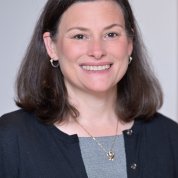Status Report
NICHD-Led Meeting Tackles Gynecologic Pain

Heart emojis flooded the lower right corner of the Zoom screen as Noa Fleischacker and Keena Batti shared their stories. Their tales of years of undiagnosed vulvovaginal pain—similar despite the two women living two thousand miles apart—resonated with many of the approximately 300 viewers of the Third Gynecologic Pain Research Virtual Meeting.
The Eunice Kennedy Shriver National Institute of Child Health and Human Development (NICHD) aims to better understand and treat gynecologic pain. A now yearly series that first convened in 2022, the Gynecologic Pain Research Virtual Meetings serve as workshops that bring together established and new investigators to share ideas and discuss emerging trends in gynecologic pain research.
NICHD’s Gynecologic Health and Diseases Branch (GHDB)—the home of gynecologic pain research at NICHD—organizes and supports these meetings. GHDB aims to improve women’s reproductive health by guiding and supporting gynecologic research and career development programs.
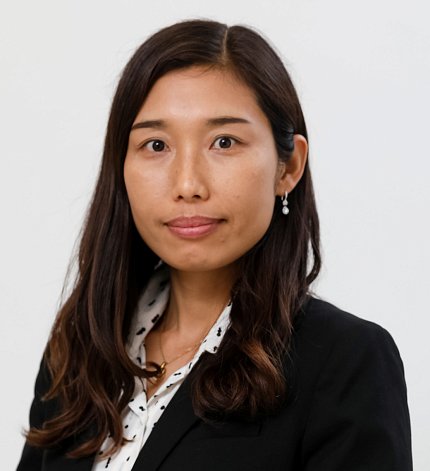
“Gynecologic pain is understudied and underfunded compared to other types of pain, and the pool of scientists studying gynecologic pain is still very small,” said Dr. Helena Ahn, program officer for GHDB and the organizer of the Gynecologic Pain Research Virtual Meeting. “More vigorous research and funding support are needed in the area of gynecologic pain, particularly considering the urgent need for effective and safe non-opioid options for pain management.”
“Gynecologic pain is often ignored or gaslit or overlooked, so we are really happy to be able to put a spotlight on this,” added Dr. Candace Tingen, chief of the GHDB, who opened the meeting.
NICHD Deputy Director Dr. Alison Cernich also weighed in. “We normalize gynecologic pain so much and it’s critical for us to understand that it does not have to be normal,” she said.
On the Agenda

Meeting attendees discussed three major categories of gynecologic pain: menstrual pain, endometriosis and vulvodynia. Researchers shared their findings in these areas, and attendees also had the opportunity to hear directly from patients with gynecologic pain. The final session of the day was dedicated to small business innovators who showcased devices intended for relieving gynecologic pain. Two speakers from the U.S. Food and Drug Administration (FDA) also provided an overview of the FDA review of gynecological devices and investigational new drug (IND) processes.
One common theme amongst the conditions discussed was the lengthy wait time for a diagnosis. Patients with endometriosis typically wait between 8 and 10 years for a diagnosis, despite the disease affecting more than one in 10 reproductive-aged women in the U. S. Vulvodynia patients also struggle with finding a diagnosis, with many seeing three or more doctors before being properly diagnosed.
“Gynecologic pain affects an estimated 26 percent of people worldwide but is often ignored despite having significant impacts on quality of life,” said Cernich.
Menstrual Pain
Menstrual pain affects 90 percent of reproductive-age girls and women, with as many as a quarter of them experiencing severe and disabling symptoms, said Dr. Laura Payne, an assistant professor of psychology at Harvard Medical School. Worryingly, menstrual pain is also a risk factor for developing chronic pain later in life.
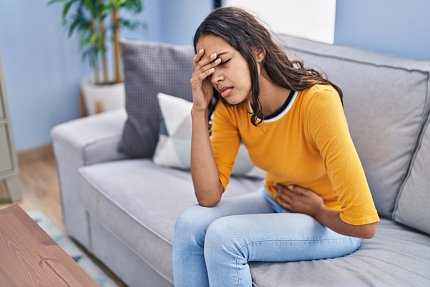
Photo: Kraken Images/Shutterstock
Payne’s research has suggested that young women with primary dysmenorrhea (a cramping pain associated with menstruation that is not caused by another condition such as endometriosis or uterine fibroids) have a lower pain tolerance when compared with a control group. She also found that multisensory sensitivity—heightened sensitivity to multiple sensory stimuli—is a good predictor of susceptibility to chronic pain in the future.
Payne has learned that time is the biggest limiting factor for conducting these sorts of studies, which she thinks may help explain why there aren’t many of them.
“We need more longitudinal studies of menstrual pain,” she said.
Endometriosis Update
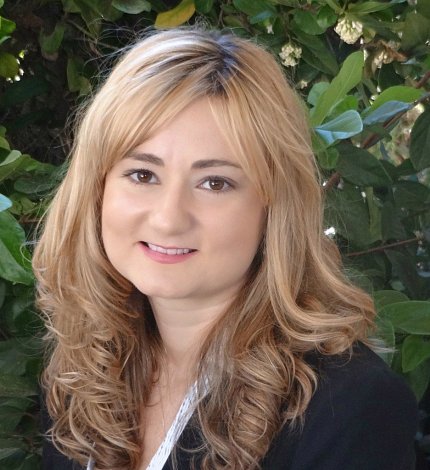
Endometriosis is an estrogen-dependent disease in which tissue similar to the lining of the uterus (the endometrium) grows outside the uterus. Women with endometriosis experience pain outside of their period, with about 80 percent reporting moderate to severe pain. Estrogen-suppressing therapies are often used to treat the condition, but almost 60 percent of women still experience persistent pain after treatment stops.
“Why do our current treatments not work well?” asked Dr. Emily Bartley, a researcher at the University of Florida College of Dentistry who is studying pain modulation and nociceptive processing in patients with acute and chronic pain.
Dr. Jae-Wook Jeong of the University of Missouri is currently developing an anti-inflammatory nanodrug to target a signaling pathway involved in endometriosis pain. The drug, tofacitinib, is effective at reducing the size of endometriosis lesions when delivered as a nanoparticle (in its original form, it exhibited off-target toxicity and caused infertility in a mouse model).
Currently the only way to diagnosis endometriosis is via laparoscopic surgery. Jeong also believes nanoparticles could be useful for imaging endometriosis lesions. “The cancer world has done this very well,” he said. “We could learn from them.”
Vulvodynia Status Report
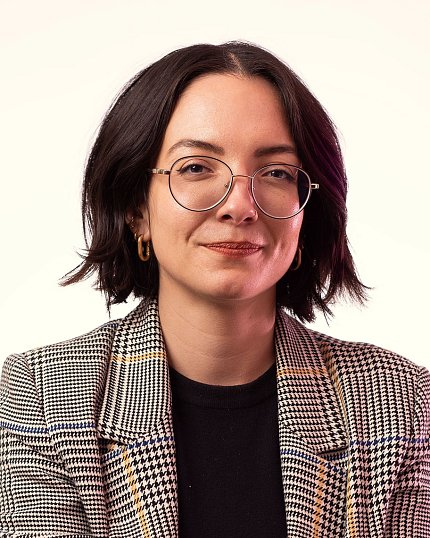
Vulvodynia—chronic pain or discomfort of the vulva—is a lesser-known gynecologic pain condition that nonetheless affects an estimated 10-26 percent of women in the U.S. alone. Despite its prevalence, little is known about what causes the condition or how to treat it.
“Treatment for vulvodynia should be personalized and not one-size-fits-all,” said Dr. Andrew Goldstein, director of the Centers for Vulvovaginal Disorders. “But efforts to develop new therapies haven’t moved forward in any significant way in the last twenty years.”
Goldstein attended a recent vulvodynia therapeutics research summit sponsored by several stakeholder groups and patient advocacy organizations that discussed some novel therapies in the research pipeline and identified the most promising candidates, which could be presented in a white paper to potential funding organizations. Tingen likened the summit to a “Shark Tank for therapeutics.”
Representatives from the patient advocacy group Tight Lipped—Fleishacker and Batti—described the consequences of living with a condition that has few approved treatments.
“It is terrifying to be a patient with access and privilege, working with doctors who are the best in their field, and still be told ‘we just don’t know enough’ at every turn,” said Batti.
More to Do
Between the menstrual pain, endometriosis and vulvodynia discussions, the unifying theme from each was that more work must be done to address the pain women experience. Goldstein called for more “well-designed clinical trials to account for as many variables as possible.”
Bartley agreed. “There’s still a lack of awareness about these types of conditions,” she said. “Ultimately, we need to keep the conversation going.”
A recording of the meeting can be viewed at https://videocast.nih.gov/watch=54812.



